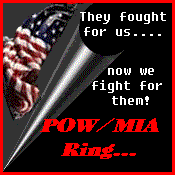 GOSEN, LAWRENCE DEAN Name: Lawrence Dean Gosen Rank/Branch: O4/US Navy Unit: Attack Squadron 23, USS TICONDEROGA (CVA 14) Date of Birth: 04 February 1938 (Windom MN) Home City of Record: Bingham Lake MN Date of Loss: 23 July 1968 Country of Loss: South Vietnam/Over Water Loss Coordinates: YF949310 Status (in 1973): Killed/Body Not Recovered Category: 5 Aircraft/Vehicle/Ground: A4F Other Personnel in Incident: (none missing) Source: Compiled by Homecoming II Project 15 May 1990 from one or more of the following: raw data from U.S. Government agency sources, correspondence with POW/MIA families, published sources, interviews. REMARKS: SYNOPSIS: The USS TICONDEROGA had first been in Vietnam waters in late 1944 when fighter planes from the TICONDEROGA and the USS HANCOCK flew strike missions against enemy vessels in Saigon Harbor. The TICONDEROGA, the fourteenth U.S. aircraft carrier to be built, was on station during the very early years of the Vietnam war and remained throughout most of the duration of the war. One of the aircraft that launched from the decks of the TICONDEROGA was the A4 Skyhawk. Douglas Aircraft created the A4 Skyhawk to provide the Navy and Marine Corps with an inexpensive, lightweight attack and ground support aircraft. The design emphasized low-speed control and stability during take-off and landing as well as strength enough for catapult launch and carrier landings. The plane was so compact that it did not need folding wings for aboardship storage and handling. In spite of its diminutive size, the A4 packed a devastating punch and performed well where speed and maneuverability were essential. LTCDR Lawrence D. Gosen was an A4F pilot assigned to Attack Squadron 23 onboard the USS TICONDEROGA. On July 23, 1968, Gosen was launched from the port catapult in his A4F Skyhawk on a combat RESCAP mission. The aircraft was observed to rotate slightly, proceed 200 yards directly ahead of the ship and impact in the water. The aircraft was launched with 16 knots excess end speed. No landing gear or flap retraction was witnessed, and no radio transmission was made. The aircraft exploded on impact with the water about 100 yards from the carrier. (NOTE: Although LTCDR Gosen is listed as lost in South Vietnam, the grid coordinates carried on file by the Joint Casualty Resolution Center (JCRC) indicate that the position of loss was well into the Gulf of Tonkin, at approximately 180N latitude. No reason for this discrepancy can be determined.) When search and rescue efforts were conducted, LTCDR Gosen's helmet was recovered. Some of his teeth were imbedded in the helmet. Clearly, Gosen did not survive the crash of his aircraft. He is listed with honor among those Americans who are still prisoner, missing, or unaccounted for because his body was not recovered. For LTCDR Gosen, death seems a certainty. For hundreds of others, however, simple answers are not possible. Adding to the torment of nearly 10,000 reports relating to Americans missing in Southeast Asia is the certain knowledge that some Americans who were known to be prisoners of war were not released at the end of the war. Others were suspected to be prisoners, and still others were in radio contact with would-be rescuers when last seen alive. Many were known to have survived their loss incidents, only to disappear without a trace. The problem of Americans still missing torments not only the families of those who are missing, but the men who fought by their sides, and those in the general public who realize the full implication of leaving men unaccounted for at the end of a war.
Tragically, many authorities believe there are hundreds of Americans still alive in captivity in Southeast Asia today. What must they be thinking of us?
What will our next generation say if called to fight if we are unable to
bring these men home from Southeast Asia?
 
This page hosted by Get your own Free Home Page |

